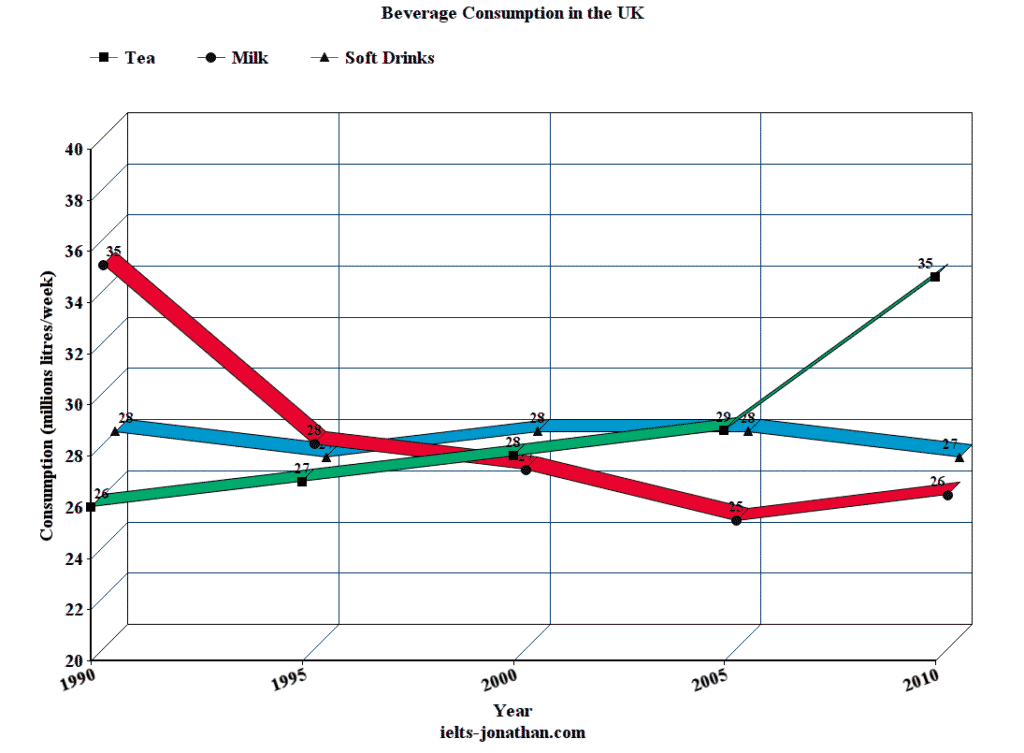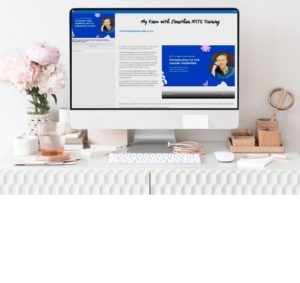What do you think IELTS examiners look at first in IELTS Task 1?
What do examiners really look for first in marking your IELTS writing?
Is it the word count, the choice of words, the spellings or even the choice of grammar?
In my experience, examiners ignore all of these aspect and generally focus on one thing first, and that’s the ‘overview’.
In fact, overviews are a huge part of IELTS Writing Task 1 and probably the most important aspect overlooked by students. 😕
Understanding what examiners are looking for in IELTS Writing Task 1.
IELTS examiners are experts in their field and are selected on the basis of their linguistic knowledge, qualifications and experience.
Despite this, all the examiners who mark IELTS use band descriptors to form their opinions of both writing and speaking and to maintain the same standard between the many examiners who mark for IELTS.
Band descriptors help examines apply the same criteria and judgement to any example of writing which responds to an IELTS prompt.
This is reassuring as you be certain that the IELTS test is fair and valid
One feature of the Band descriptors and how they link to assessment is the list of items which examiners check.
Some are arbitrary and judgmental, like this example,
Inadequately covers, key features/ bullet
points; there may be a tendency to focus on details
but a few are completely straightforward and clear.
Presents an overview with information appropriately selected
Source: Public IELTS band descriptors, online
By studying the Task Achievement descriptors of the band scores, we can clearly see that
- No marks are given specifically for an introduction, but you need it,
- key details are important
- but clearly an overview or ‘summary’ of the main or most obvious trend is a feature to score anything above Band 5.
We can ascertain, examiners use this checklist to their advantage.
You can be sure that the overview is one of the first things an examiner checks in your writing.
Why the overview is important in Task 1
Examiners I speak to also tell me the overview is probably one of the first things markers look for when viewing a Task 1 writing response.
It’s the first aspect of your writing that can be easily checked and and the first that can be easily assessed across all four band scores.
A well-written overview can also indicate the level of the content to follow in both the language and ideas, and create a positive impression.
Besides, without a well-written overview, it will be difficult to get a high score as overviews feature highly in the first band score, Task Achievement.
So you can see there are a number of good reasons to present an overview of some quality.
Writing the best overview for IELTS Writing Task 1
To score high in Task Achievement, you need to provide a well-written overview paragraph of 1-3 sentences.
The overview identifies and describes 1, 2 or 3 of the main or noticeable trends from the visual representation in general terms.
The number of sentences and the length of an overview is always dependant on the visual trend or changes that you can see.
In some cases, there may be only one noticeable feature, and this would shorten the length of the overview. A short overview is nothing to worry about!
An overview paragraph is like a condensed version of your full 150-word answer, however, there are some important points to consider.
For example, many candidates mistakenly include minor or irrelevant details in an overview sentence and end up losing marks in this area.
What makes a good overview?
I feel that to successfully present an overview a writer must
- Summarise the notable trend, features or changes
- Limit these to a maximum of three
- Summarise trends, features or changes between multiple charts
An overview should probably not:
- Include any data (e.g., numbers, figures)
- Include minor or irrelevant details
Clearly, while the number of research students has increased, there have been larger increases in international research students. In the second chart, there is also a noticeable decrease in the number of male-home research students by 2010.
Advantages of a good overview
Presenting an exceptional overview to the examiner has a number of advantages.
In terms of words and grammar, this type of overview gives you the opportunity to be creative and display high-level language.
This is contrasted to the rather mechanical writing of reporting the key features in the body paragraph. Often the body writing is quite a dull section of the report as it simply reports the significant numbers, stages or changes.
A good overview is not restricted in this way.
While the tone needs to be academic and serious, there is some flexibility in the grammar and vocabulary choices you can make which can add to your score.
A further advantage, and one that always impresses me, is that a good overview can set examiner expectations for the remainder of the writing.
Creating a positive impression with a well-written overview at this stage undoubtedly has beneficial effect on the rest of your writing.
Writing an overview example
Let’s go through a process of writing an overview of this sample Task 1 Writing question.
Let’ see how we can address some of the points I have raised and make an excellent overview:
Here’s a sample question
The graph below gives information about the consumption of drink beverages (in millions of litres per week), in the UK from 1990 to 2010.
And here are the instructions
Summarise the information by selecting and reporting the main features, and make comparisons where relevant.
Noticing the overview
Noticing the trend or changes overall is the first step in understanding this chart but we also need to pay attention to the data.
There are three types of drink being tracked and the quantities are recorded in millions of litres per week.
It is also important to note in this example that the graph presents data between 1990 and 2010. Another common way of describing this time period is two decades.
If we follow the trends for both ‘milk’ and ‘soft drinks’ from the beginning to the end, we can see that soft drink consumption has risen and ‘milk’ consumption has fallen.
These are main features because they are the most obvious.
To find another important feature, we could mention that ‘tea’ has almost stayed the same over the years, over the period or over the period recorded.
We could mention that there were slight changes, but we must be careful not to give too much detail at the point in the report.
Remember this overview is a summary.
Overall, the consumption of milk has generally fallen while the consumption of soft drinks has increased.
Remember this an overview so avoid giving key details and save these for later paragraphs.
Depending on the graph or chart, you may want to add another main feature. If you feel it is significant and meaningful, you could add it.
In this graph, I can see that the figures for tea are quite significant. The figures haven’t changed that much over the period.
The consumption of ‘tea’ has almost stayed the same over the two decades.
I think this is quite a nice contrast to the other figures, so I could use a ‘prepositional noun phrase’ such as ‘in comparison’ or ‘in contrast’ to highlight the differences I can see.
In comparison, the consumption of ‘tea’ has almost stayed the same over the two decades.
Now I feel we have sufficiently summarised the most important ideas and the result looks like this.
Overall, the consumption of milk has generally fallen while the consumption of soft drinks has increased. In comparison, the consumption of ‘tea’ has almost stayed the same over the two decades.
If we added any more information this would probably be unnecessary detail and we would run the possibility of losing marks.
That’s an important point to remember: Never over complicate the overview sentence.
You might be thinking of mentioning ‘there was a slight change in the consumption of ‘milk’ or “Pepsi” in 2000, but is this significant enough for the overview sentence?
Remember, a great overview is only a summary of the main features.
How can I increase my Band Score even further?
Now that we have taken the most valuable information from the graph, we can combine these features to make the following overview sentence that follows the introduction.
The graph shows the amount of consumption in litres per week of various beverages between 1990 and 2010.
Overall, the consumption of milk has generally fallen while the consumption of soft drinks has increased. In comparison, the consumption of ‘tea’ has almost stayed the same over the two decades.
This is a good overview because
- Clearly identifies two main trends
- Puts forward a strong contrasting statement
- Shows clear coherence, cohesion and progression between paragraphs
- Display enough vocabulary and grammar to be assessed
Can you see how an effective overview can give you additional marks in the eyes of the examiner?
If you didn’t know already, IELTS like to give marks in ‘Grammatical Range and Accuracy’ for complex sentences.
It’s another important feature of the band descriptors.
Given the fact that an overview sentence should contain more than one main idea, it is a good idea to link these ideas together in the form of a single complex sentence.
Using Linking Words.
By using linking words such as ‘in contrast‘ ‘while’, ‘although’ or ‘despite’ (to name but a few) to connect naturally two pieces of information together, you are one step closer to a band score of 7 in Grammatical Range and Accuracy.
Using Complex Sentences
At this level, the marking criteria state that a candidate needs to ‘use a variety of complex structures’.
Make sure you understand what these words mean and how to include them in a sentence. Here I have taken my example and combined it it to one sentence that explains three ideas.
We can see that in comparison to the consumption of ‘tea’, which has almost stayed the same over the two decades, the overall consumption of milk has generally fallen while the consumption of soft drinks has increased.
It’s better to use one or two good complex sentences than many long and complicated sentences. That’s a clear instruction, isn’t it.
Using an overview checklist
It is worth remembering these general guidelines for writing an overview;
- There is no need to support the features with data.
- Save data for the details paragraph.
- Never include irrelevant or minor information.
- Never give your opinion or try to explain why something has happened. If it’s not on the graph, don’t add it
- It’s possible to start your overview sentence with ‘Overall’, ‘In general’ or ‘It is clear that’.
- Avoid repeat the words from the question, the examiner will ignore these.
- Try to avoid writing an overview in more than two or three sentences.
- Write your overview as a complex sentence.
How do examiners mark an overview?
A basic attempt at an overview will only get a maximum of 5 for Task Achievement.
Notice how the word ‘overview’ is mentioned several times in the marking criteria for Task Achievement below.
Of course, examiner marking is subjective.
However, if you produce an overview that explicitly addresses the right features and nothing else, you are objectively matching the Band 7 criteria.
What next?
Your next step should be to select a number of tasks and practice writing effective overviews.
The best way to learn and benefit from this practice is to get feedback.
Jonathan
I’m Jonathan I’ve taught IELTS and University English in more than a dozen universities and schools around the world. I’m a parent, traveller and passionate about language teaching and helping students achieve their dreams. Whilst living in Austria or working in Asia, I run IELTS courses to help students get to where they want to be. If you are serious about IELTS, connect with me to see how I can help you.








Was this helpful? Leave a comment :)